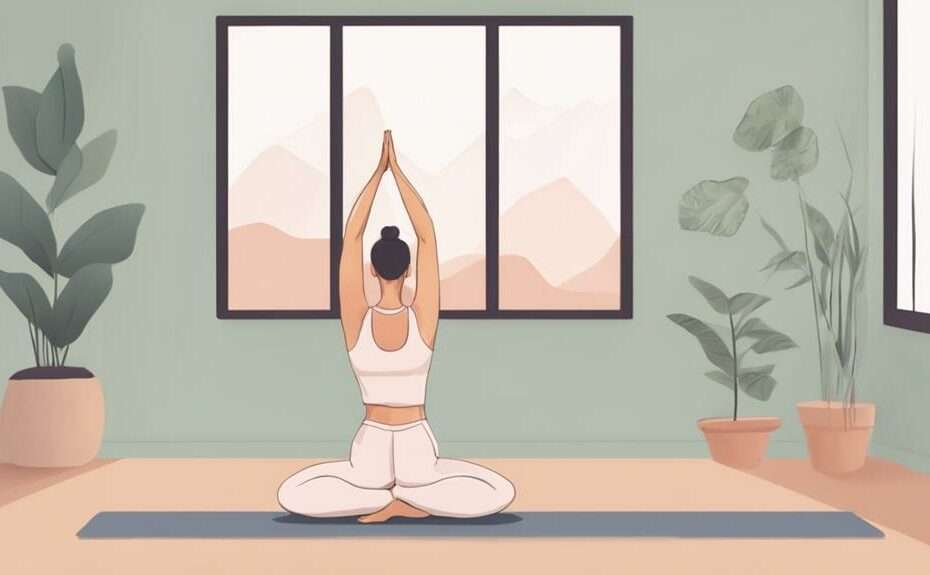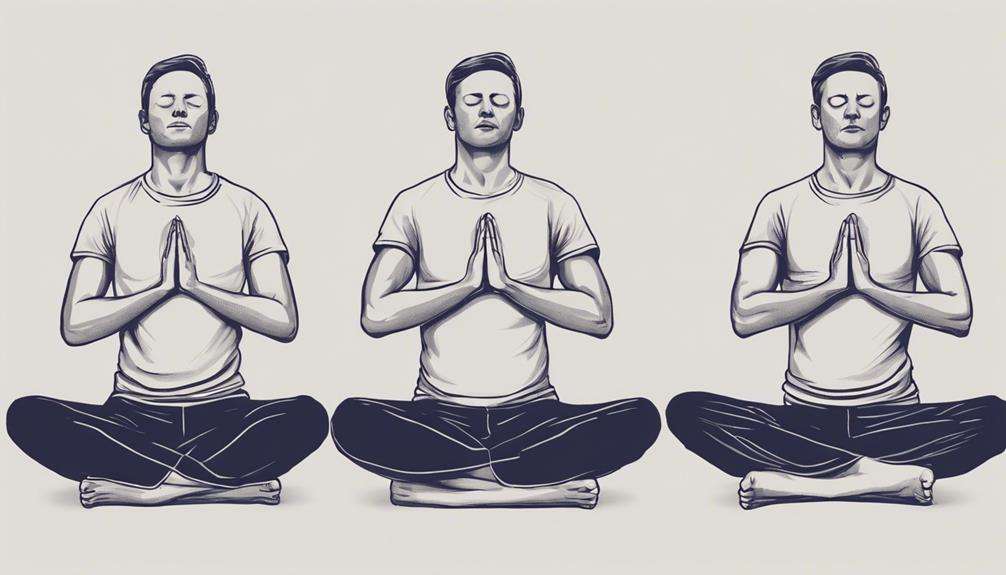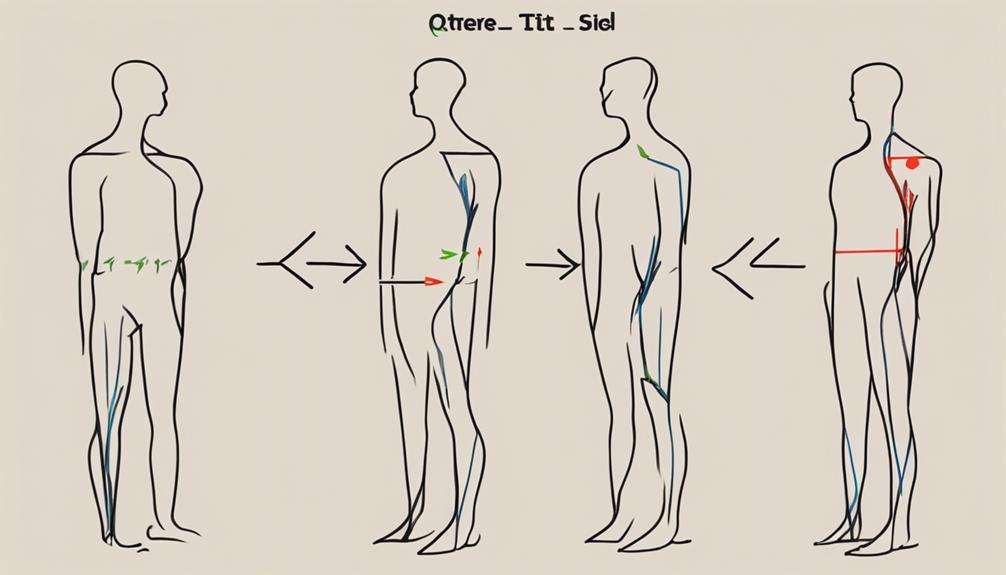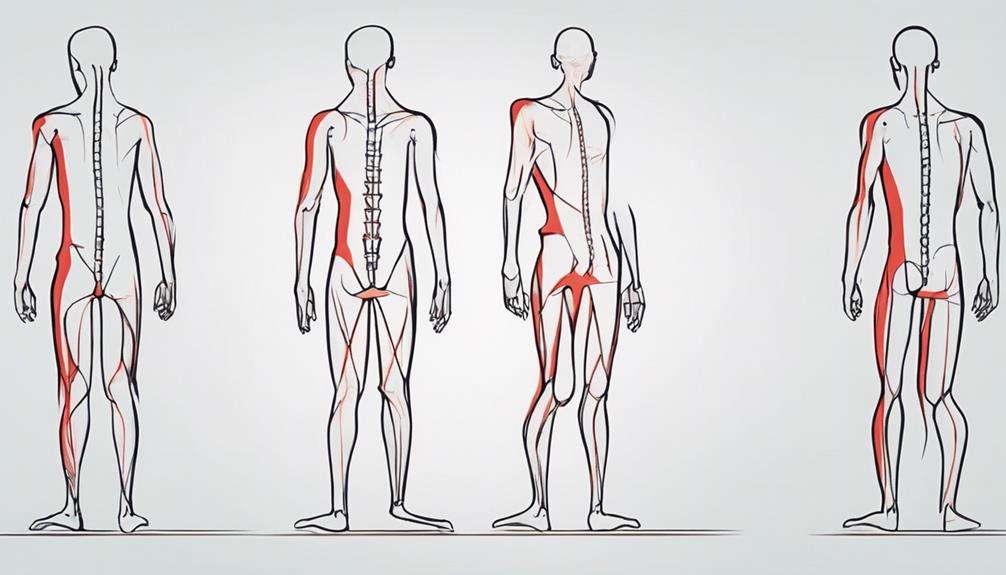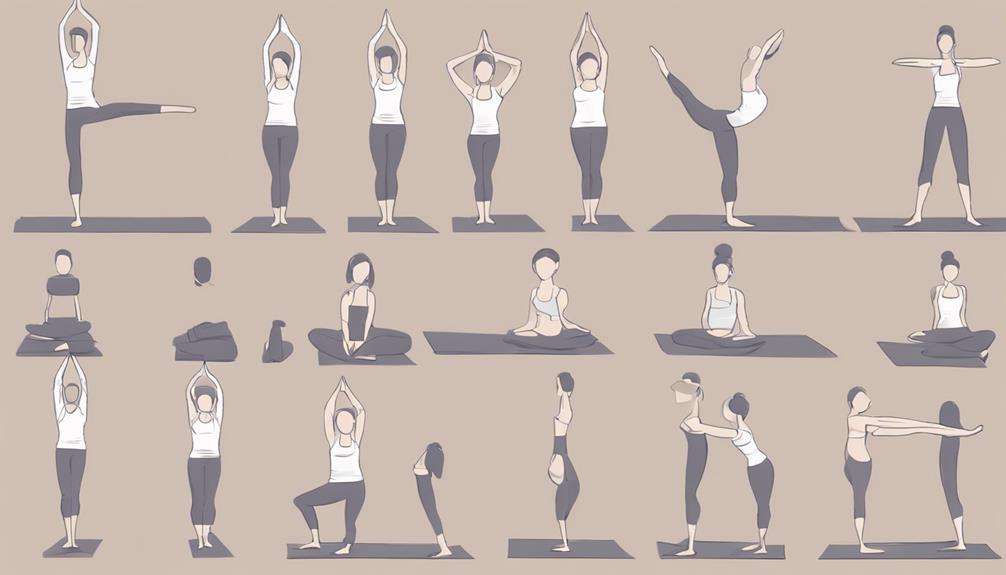When you think about improving your posture, have you considered how mindful movements could play a role in naturally correcting it? Certain exercises and practices can help align your body and strengthen key muscles, leading to better posture over time.
But which specific movements are most effective in this regard? Let's explore some mindful techniques that can positively impact your posture and overall well-being.
Key Takeaways
- Yoga, Pilates, Tai Chi, and meditation improve posture by strengthening core muscles and promoting spinal alignment.
- Mindful movements release muscle tension, reduce back pain, and enhance body awareness for better posture.
- Engage in specific exercises like Cat-Cow, shoulder bridges, and spine twists to correct postural alignment naturally.
- Practices like barre classes and precise Pilates movements target muscle groups for improved posture support.
Mindful Movements for Improved Posture
Engage in mindful movements to enhance your posture with targeted stretches and muscle strengthening exercises. Yoga poses like Cat-Cow and Downward-Facing Dog are excellent for improving posture as they help stretch and strengthen key muscles along the spine. Incorporating Pilates movements such as spine twists and reverse plank bridges can engage your core muscles, promoting better alignment and posture.
Consider attending Barre classes, which focus on core strength and precise movements to aid in posture improvement through muscle engagement and alignment. Additionally, practicing shoulder bridges and cobra poses in yoga can help stretch and strengthen muscles essential for better posture.
Don't underestimate the power of strength training exercises like deadlifts and rows, which target key muscle groups essential for posture correction and enhancement. By incorporating these mindful movements into your routine, you can actively work towards improving your posture naturally and effectively.
Yoga Poses for Posture Correction
To enhance your posture through focused movements, consider incorporating specific yoga poses that target key areas of the body for correction and improvement. Yoga offers a variety of poses that can help correct posture naturally.
Downward-Facing Dog, for instance, is beneficial for lengthening and strengthening the spine, leading to improved posture over time. Pigeon Pose focuses on hip flexibility, which can alleviate strain on the lower back and contribute to better alignment.
Child's Pose is effective in stretching the spine and shoulders, releasing tension and promoting proper posture. Incorporating Cat-Cow pose into your routine enhances spinal flexibility and awareness, aiding in the correction of posture imbalances.
Additionally, the Standing Cat-Cow pose engages core muscles and encourages spinal alignment, further supporting better posture. By practicing these yoga poses regularly, you can work towards achieving ideal posture, alignment, and flexibility for a healthier spine and body.
Meditation Techniques for Better Alignment

For better alignment during meditation, focus on maintaining a stable and solid seat to support proper posture. To achieve this, sit with your legs crossed comfortably or place your feet flat on the floor. Straighten your upper body without stiffness, allowing your spine to align naturally.
Position your upper arms parallel to your body to help establish a balanced and aligned posture. Drop your chin slightly and gaze downward to promote relaxation and focus during meditation. By incorporating these mindful movements into your meditation practice, you can improve your posture and alignment.
Pilates Movements for Postural Support
Improving your posture through Pilates involves focusing on core strength and alignment to naturally support better body positioning. Pilates is renowned for its ability to target key muscles essential for postural correction.
Movements such as spine twists engage the core and back muscles, aiding in spinal alignment. Reverse plank bridges work on strengthening the posterior chain, promoting a straighter posture.
Shoulder bridge exercises not only strengthen the glutes but also help distribute weight evenly across the shoulders, assisting in correcting rounded shoulder posture. The emphasis in Pilates is on precise movements that target specific muscle groups to improve alignment and overall posture.
Tai Chi for Posture Alignment
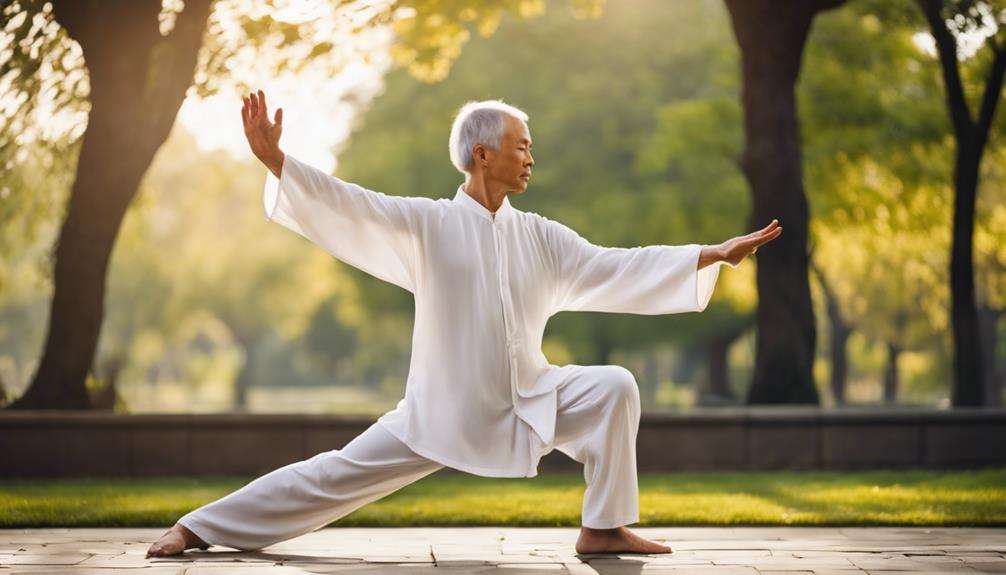
Engage in Tai Chi to enhance your posture alignment through deliberate, slow movements that focus on core strength and body awareness. Tai Chi is a centuries-old practice known for its ability to improve posture by emphasizing proper alignment, balance, and body awareness. The slow and controlled movements in Tai Chi help strengthen core muscles, essential for supporting the spine and maintaining an upright posture. By regularly practicing Tai Chi, individuals can experience reduced back pain and stiffness, leading to a more aligned and comfortable posture.
Additionally, the gentle and flowing nature of Tai Chi promotes relaxation and helps release tension in muscles, contributing to better posture alignment. Additionally, Tai Chi cultivates mindfulness, enabling practitioners to become more conscious of their posture during daily activities. This increased awareness can aid in correcting posture habits that may contribute to misalignments or discomfort. By incorporating Tai Chi into your routine, you can proactively work towards improving your posture through a holistic approach that benefits both your physical and mental well-being.
Frequently Asked Questions
How Can I Correct My Posture Naturally?
To correct your posture naturally, focus on engaging in yoga poses, Pilates exercises, and Tai Chi. Strengthen your core, practice mindful breathing, and maintain body alignment. Incorporate a stretching routine, raise posture awareness, and consider using standing desks or ergonomic chairs.
What Exercise Is Best for Correcting Posture?
For correcting posture, focus on yoga poses for alignment, Pilates for core strength, and strength training for muscle support. Engage in balance training and back stretches for spine alignment. Mindful movements like shoulder rolls and hip flexibility are crucial.
How Can I Subconsciously Fix My Posture?
To subconsciously fix your posture, incorporate mindful breathing, gentle stretching, daily walks, desk ergonomics, postural awareness, mindful sitting, core strength, mindful standing, relaxation techniques, and mindful walking. Engage in these practices consistently for natural improvements.
How Can I Force Myself to Correct My Posture?
To force yourself to correct posture daily, set reminders for posture check-ins. Use visual cues, desk stretches, yoga poses, and standing breaks. Strengthen your core, practice mindful breathing, maintain an ergonomic setup, and utilize back support for better posture.
Conclusion
To sum up, incorporating mindful movements like yoga, meditation, Pilates, and Tai Chi can help correct posture naturally. Consistent practice with patience and body awareness is key.
Remember to focus on form, alignment, and strength to see improvements over time.
Embrace the journey towards better posture with these mindful methods for a more aligned and agile body.
